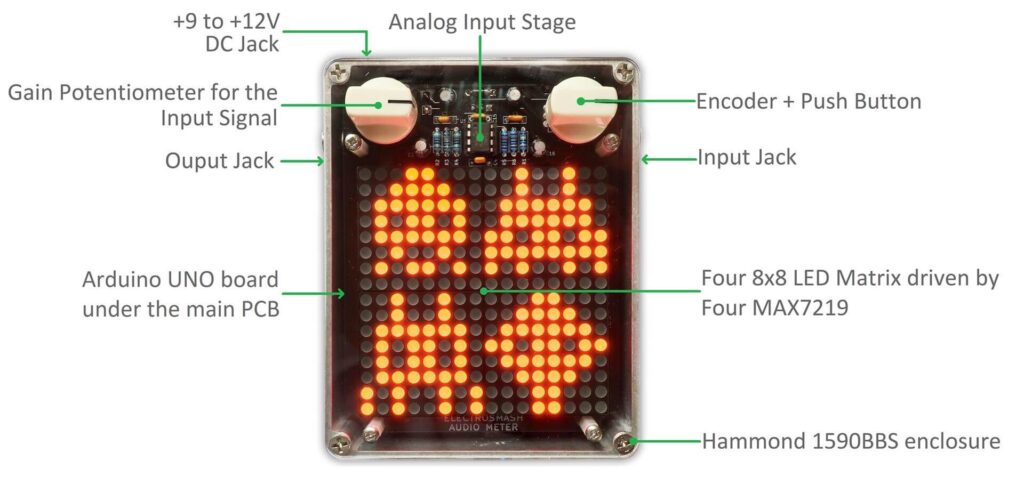The Arduino Audio Meter is a programmable ‘guitar pedal’

Normally guitar pedals take in a signal from your instrument, then some modification to an amplifier. ElectroSmash’s open source device, however, looks like a guitar pedal, connects to a guitar and amp like a guitar pedal, but actually leaves the signal unmodified. Instead, it displays a variety of info about what you’re playing on its 16 x 16 LED matrix.
The Arduino Audio Meter uses an Uno for control and analysis, and acts as a VU meter by reading the incoming audio and creating LED animations. It also features a tuner function, visual metronome, frequency detector, and a simple lamp, which could all certainly be useful when playing.

User input (besides the1/4-inch audio jack) is via a potentiometer and encoder, and it even has a few games available for it if you need to blow off some steam between sets! Build kits are available here if you’d like to make your own.



